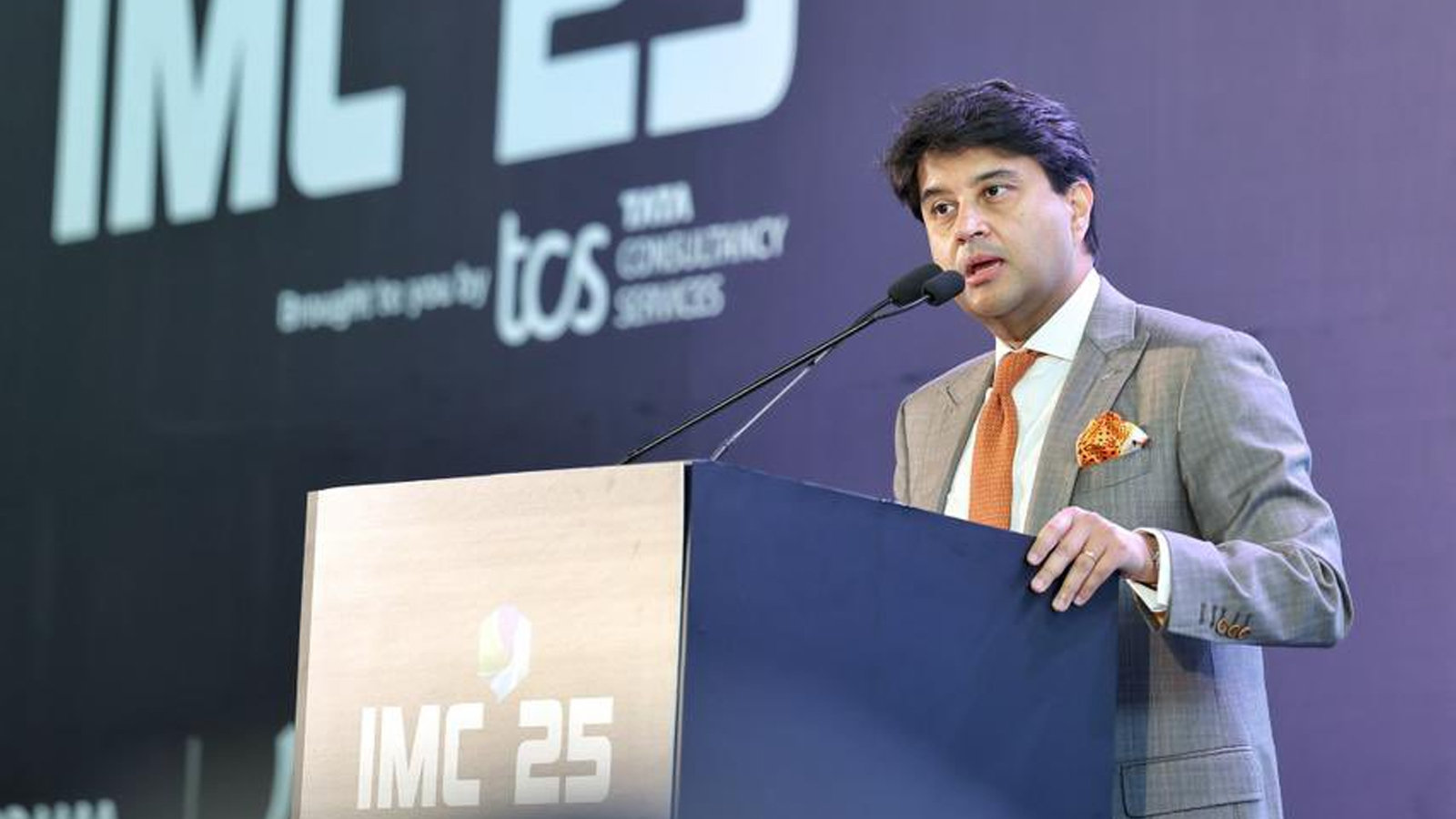Union Minister for Communications Jyotiraditya M. Scindia on Wednesday inaugurated the Satcom Summit on “Space Networks for Universal Connectivity” at the India Mobile Congress 2025 (IMC 2025), calling it the beginning of a new revolution in digital inclusion.
The event brought together key stakeholders from India’s telecom and space sectors, including Jitendra Singh, Minister of State (Space); V. Narayanan, Chairman of Indian Space Research Organisation (ISRO) and Department of Space; and Pawan Goenka, Chairman of Indian National Space Promotion and Authorisation Centre (IN-SPACe).
Addressing the summit, Minister Scindia said the initiative marks “the threshold of a revolution – a revolution born in the sky, carried by satellites, but destined to transform lives on the ground.” He highlighted India’s rapid digital transformation, connecting 99.9% of the population through 4.8 lakh 5G towers in just 20 months – the fastest rollout globally.
“SATCOM is no longer a luxury; it is a right – a form of justice in the digital era,” Scindia declared, stressing that satellite communication will empower farmers, fishermen, doctors, and students in areas that remain beyond terrestrial network reach.
Under the Universal Service Obligation Fund and Digital Bharat Nidhi, the government has set a target to connect 38,260 remote villages across difficult terrains with a total investment of ₹40,000 crore. So far, around 29,000 villages – nearly 75% – have already been connected.
The Minister also announced major policy reforms aimed at positioning India as a global leader in satellite communications. These include the administrative allocation of satellite spectrum in line with international best practices and the granting of GMPCS licences to OneWeb and Jio Satellite Communications. Starlink has also received a Letter of Intent, paving the way for a vibrant SATCOM ecosystem.
With the Indian SATCOM market valued at $4.3 billion in 2024 and projected to reach $14.8 billion by 2033, Scindia highlighted the sector’s economic and strategic potential. He also announced the establishment of a ₹900 crore National SATCOM Monitoring Facility to safeguard spectrum assets and enhance the security of India’s satellite gateways.
Recalling India’s journey from Aryabhata in 1975 to landmark missions like Chandrayaan-3, Aditya-L1, NISAR, and the upcoming Gaganyaan, Scindia said the country has evolved from being a follower to a global leader in space innovation. “India must not just be a beneficiary of satellite services – it must become a hub, an exporter, and a trusted global partner,” he asserted.
The Minister called for a unified, milestone-driven SATCOM programme bringing together government, industry, startups, academia, and international partners. “In the great symphony of progress, India will not be a silent listener. India will be the conductor, leading the orchestra of global innovation – composing the melody of opportunity,” he said.
Organised jointly by the Department of Telecommunications (DoT) and the Cellular Operators Association of India (COAI), IMC 2025 is being held from October 8 to 11 under the theme “Innovate to Transform.” The event serves as one of India’s largest platforms for showcasing advancements in telecom and technology, bringing together industry leaders, policymakers, and innovators to shape the future of digital connectivity and technological leadership.
This year’s SATCOM summit underscores India’s strategic vision to extend digital connectivity to every corner of the nation – and beyond its borders – positioning the country at the forefront of the global satellite communication revolution.










